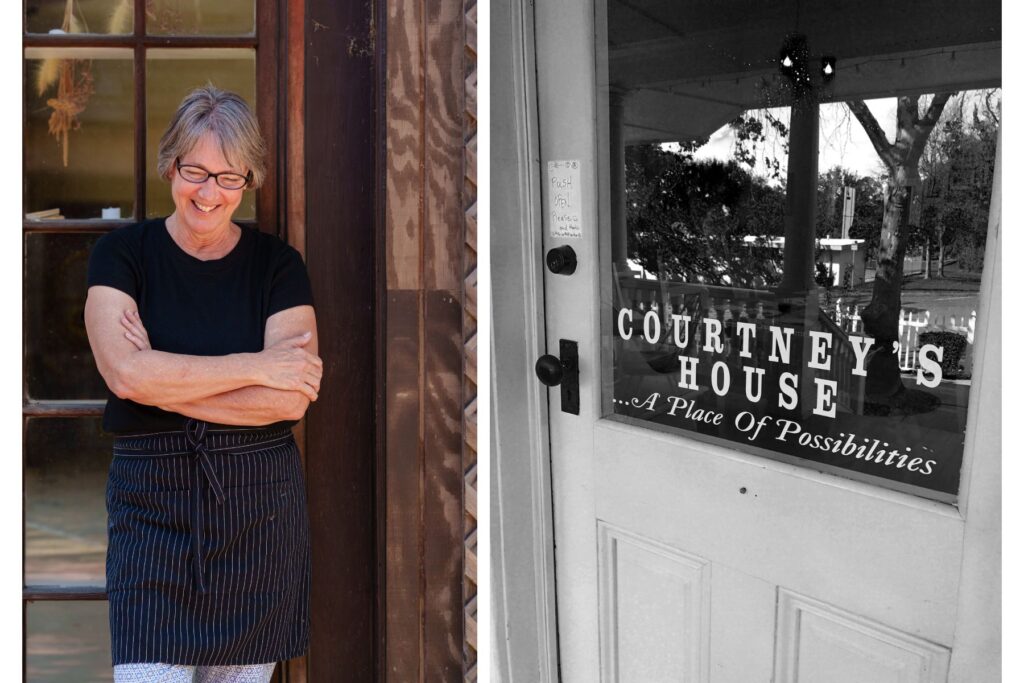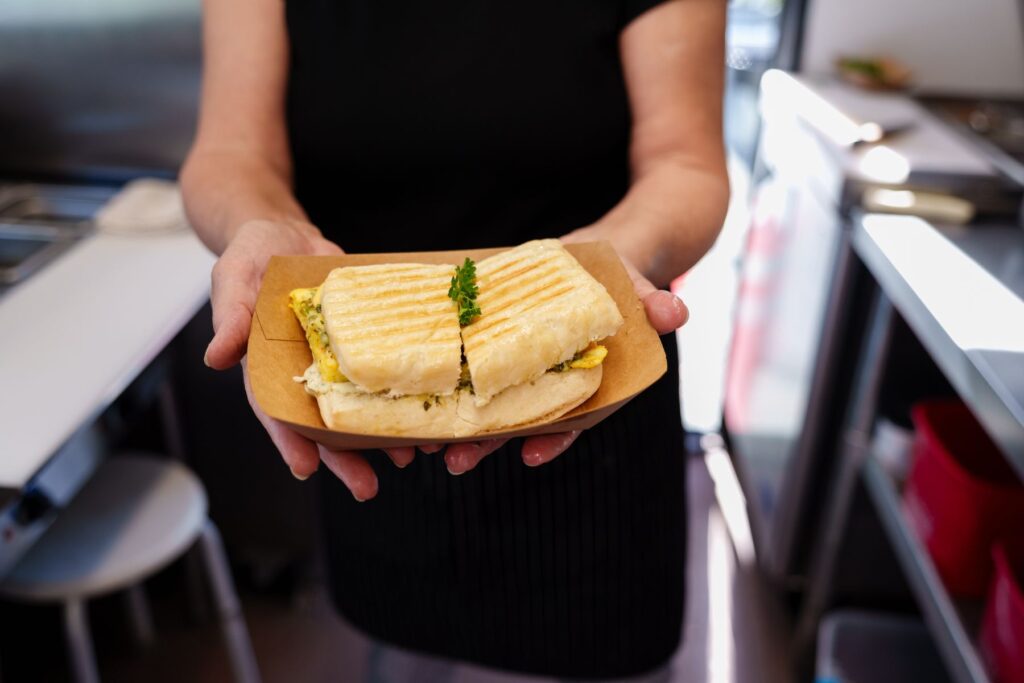
Perspective Piece: People with Disabilities Found Meaning at Templeton Café
Words by Christina Dillow
Photography by Alisa Heraldo
In this Perspective piece, former Fig at Courtney’s House Owner Christina Dillow shares how her café provided a rare opportunity for people with disabilities to have meaningful employment and grow within the hospitality industry.
When I opened a restaurant in Atascadero called Fig in 2009, I was excited to offer the community healthy food in a welcoming space. My resume by then already included The Old Harmony Pasta Factory, which I opened at the ripe age of 23, and management of Big Sky Café in Downtown San Luis Obispo. Both of those experiences taught me a lot at a young age about dining, customer experience and people management. But a request from an Atascadero High School teacher one day showed me I still had a lot to learn.
Fig, located in a rented space on Traffic Way, was an overnight success. Inspired by the generosity of my former boss at Big Sky Café who is committed to important social issues, raising awareness through art displays, food and fundraisers, I decided to give back to the community. I was happy to support local causes, fulfilling almost daily donation requests with gift certificates or free food. My response to one request still lingers in my mind today: a teacher came to our back door, proposing that one of the students in her special education program train with us as part of a job readiness class. Regrettably, I said, “No, I am too busy.”
A few years later, as fate would have it, I met Carrie Sanders, the founder of a local non-profit called Courtney’s House. The organization’s mission of inclusion and opportunity for young adults with intellectual and developmental disabilities (IDD) was admirable. Inspired by her daughter with autism, the program provided a safe and supportive place for young adults to gather socially. Carrie had been searching for someone to operate an inclusive café, fulfilling her vision to offer job training to the many people in her program who lamented a lack of employment opportunities. The café was housed in a grand Victorian home with a spacious wraparound porch that overlooked a park, home to the popular Templeton Farmers Market. Without hesitation, I agreed to spearhead the project: Fig at Courtney’s House.
From the beginning, we had our share of challenges. As Director, I had decided to run the café like the other restaurants I had operated. In my opinion, inclusion meant just that — include the IDD participants as part of the restaurant staff. Once matched to a suitable position, the training would begin. I hired employees without disabilities who demonstrated both restaurant skill and compassion, since they would be training, coaching and working alongside their IDD counterparts. My employees with disabilities were excited, eager and a little anxious, as well, to be productive. We soon learned regulating emotions was hard for the workers with IDD. Voice modulation, in particular, was an area we needed to address in order to provide a relaxing dining space for customers; everyone had to speak in quiet voices. In the early days, we learned by trial and error — we didn’t have a business model to follow.
Eventually we hired a talented program manager with both restaurant management and para-educator experience. She helped our typically abled staff understand and mitigate any behavioral challenges arising with IDD staff. She also helped us build a solid training program using standard resource teacher techniques, such as a ratio of 2 coaching employees per 1 coached employee. This structure created support and provided a safe space for learning and growth.
On average we worked with a core group of 12 IDD participants. A few were on our payroll as part-time employees; some earned a stipend as interns and others sought employment elsewhere. We had decided not to push individuals to leave our program, given that few other restaurants were willing to hire from our team. Grocery stores and retail shops remained the leading places offering employment opportunities to people with IDD, likely because restaurants are too fast paced and stressful for coaching. I believe any restaurant willing to dedicate a compassionate employee to support and coach an IDD individual will find it a worthy commitment. I have learned that we all have something to contribute and we can each learn something valuable from one another. Hopefully, we will see more workers with IDD in the hospitality industry.
It would be great to tell the story of our café surviving the pandemic, but like so many other restaurants, it didn’t. Looking back, my work was like striking gold: a day in the kitchen with Brendan making top quality scones, Heather making pesto, Brenden cutting gallons of vegetables for our popular spicy roasted vegetable dish, Destiny greeting customers at the host stand with a shy smile, Emily and Rio taking orders or bussing tables in the dining area, and Evan sweeping the porch while talking with customers. There are so many others I could mention who contributed to our success. I’m so grateful to our incredible staff and volunteers, who cheered on our employees with disabilities, supporting them every step of the way. Writing this part of the story makes it sound like it was easy, though I know that wasn’t always the case. But I can still hear the laughter and feel the joy, so I know it was worth it. Given the opportunity to do it all over again, I would say “yes,” with my whole heart.



